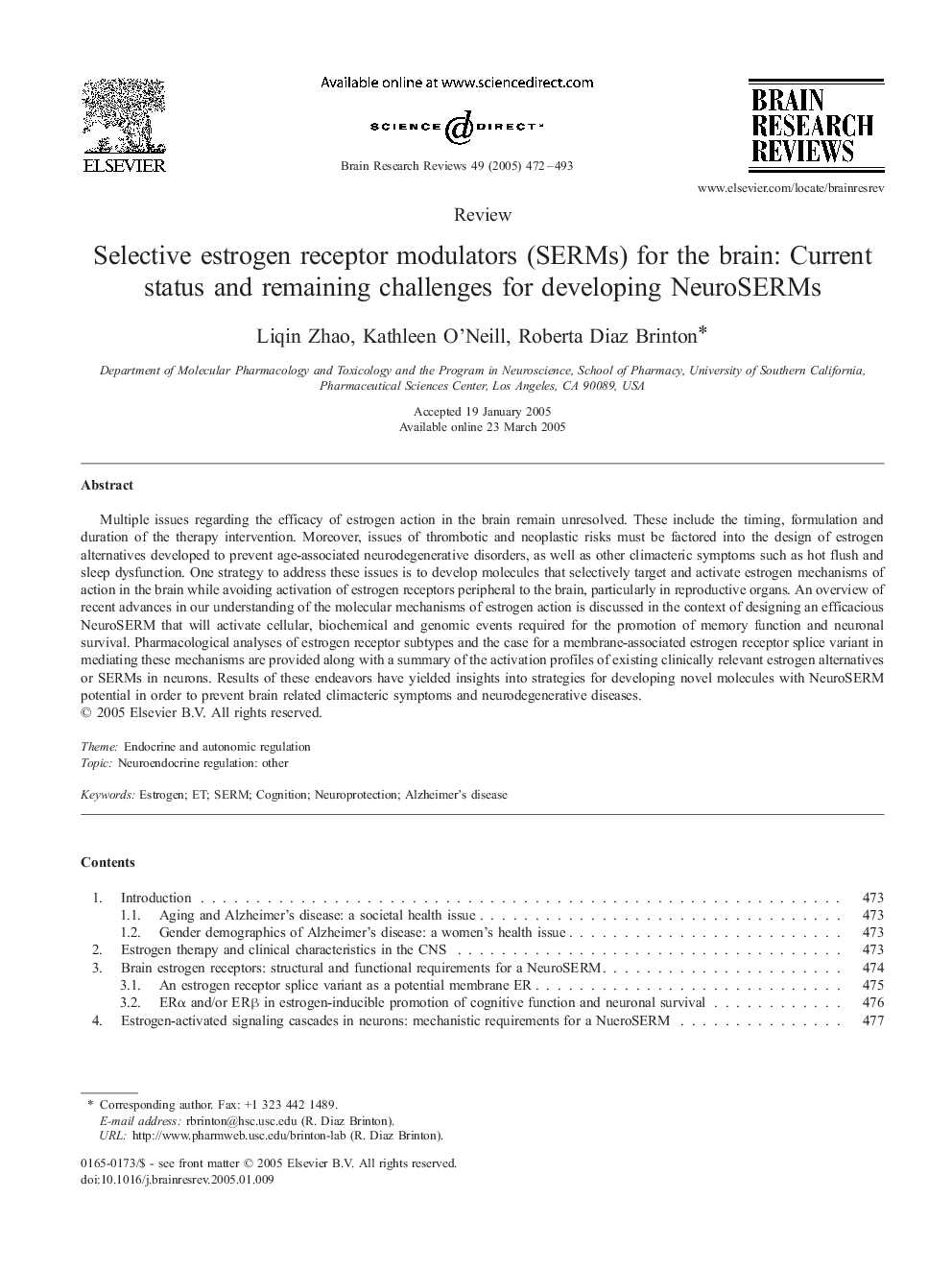| Article ID | Journal | Published Year | Pages | File Type |
|---|---|---|---|---|
| 9423025 | Brain Research Reviews | 2005 | 22 Pages |
Abstract
Multiple issues regarding the efficacy of estrogen action in the brain remain unresolved. These include the timing, formulation and duration of the therapy intervention. Moreover, issues of thrombotic and neoplastic risks must be factored into the design of estrogen alternatives developed to prevent age-associated neurodegenerative disorders, as well as other climacteric symptoms such as hot flush and sleep dysfunction. One strategy to address these issues is to develop molecules that selectively target and activate estrogen mechanisms of action in the brain while avoiding activation of estrogen receptors peripheral to the brain, particularly in reproductive organs. An overview of recent advances in our understanding of the molecular mechanisms of estrogen action is discussed in the context of designing an efficacious NeuroSERM that will activate cellular, biochemical and genomic events required for the promotion of memory function and neuronal survival. Pharmacological analyses of estrogen receptor subtypes and the case for a membrane-associated estrogen receptor splice variant in mediating these mechanisms are provided along with a summary of the activation profiles of existing clinically relevant estrogen alternatives or SERMs in neurons. Results of these endeavors have yielded insights into strategies for developing novel molecules with NeuroSERM potential in order to prevent brain related climacteric symptoms and neurodegenerative diseases.
Keywords
Related Topics
Life Sciences
Neuroscience
Neuroscience (General)
Authors
Liqin Zhao, Kathleen O'Neill, Roberta Diaz Brinton,
